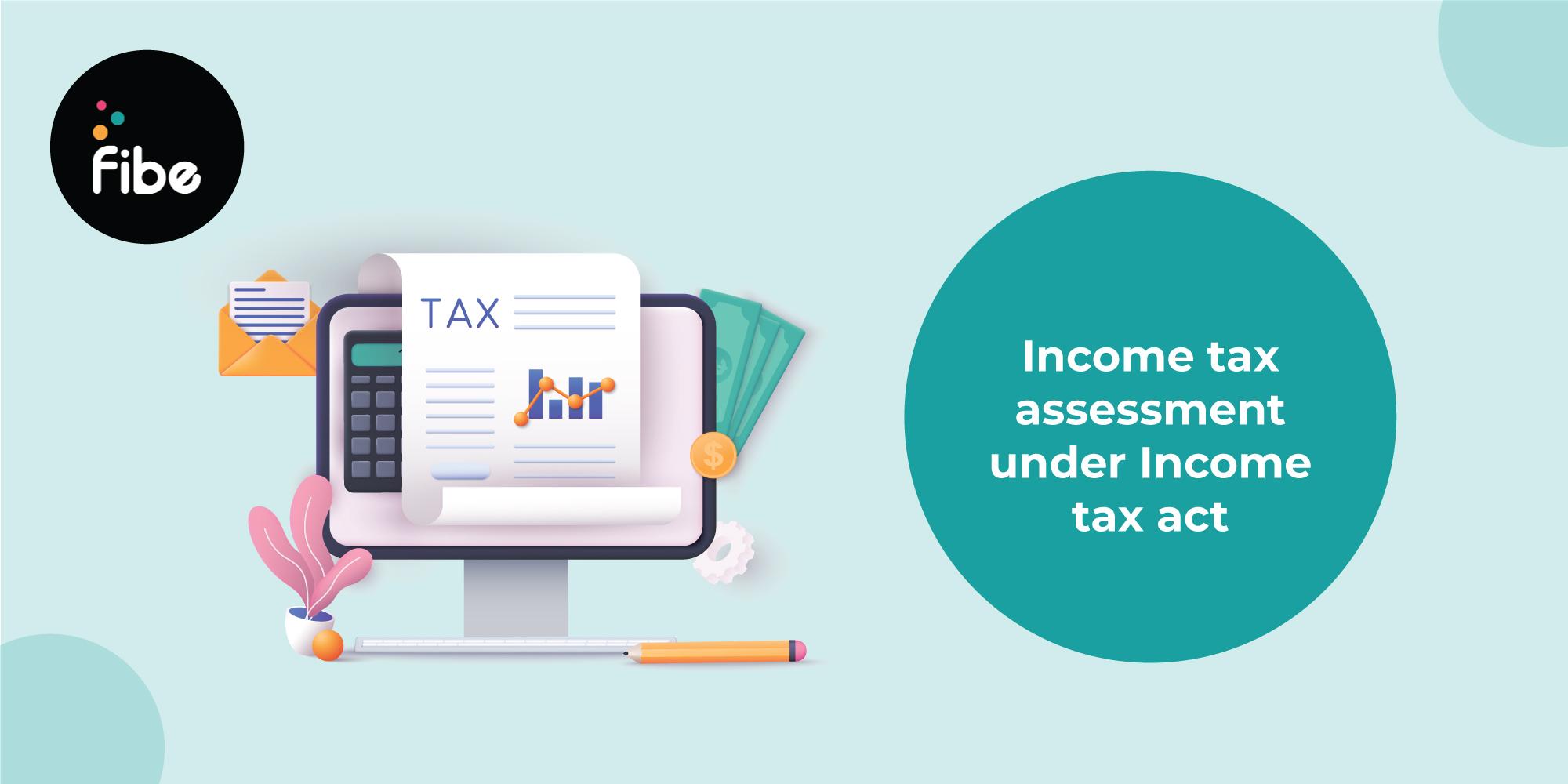Types of Assessment in Income Tax : A Detailed Guide
Reviewed by: Fibe Research Team
- Updated on: 29 May 2025
Reviewed by: Fibe Research Team

Every taxpayer who falls under the tax bracket is required to pay income tax as per the law. Once you file your returns, the Income Tax Department reviews your details to verify if everything is accurate. This process is known as assessment in income tax.
The assessment procedure of income tax helps the department ensure that your income, deductions and tax payments match what’s reported. To carry this out, different assessment types are followed based on your case.
Read on to know what is assessment in income tax and explore the key types of assessment in income tax you should be aware of.
After every assessment year in income tax, eligible individuals and entities need to file income tax returns (ITR). Based on that, you will pay tax on the net taxable income earned during the year. Once you file the ITR, the income tax department assesses and verifies the submission. This process is known as income tax assessment.
Your ITR can be selected for a specific assessment year based on the criteria set by the Central Board of Direct Taxes (CBDT).
The Income Tax Act defines different ways in which your tax details can be reviewed. These help the department check your income, deductions and payments for accuracy. Here are the main types of assessment in income tax you should know:
Self-assessment is the first step in the income tax process. Here, the taxpayer calculates their own tax based on total income from all sources.
After adjusting for deductions, exemptions or any losses, the final tax amount is calculated as per the applicable slab. TDS and advance tax already paid are subtracted from this amount. If there’s any balance due, it must be paid before filing the income tax return. This ensures that the return is complete and accurate when submitted.
Summary assessment is an automatic check carried out by the Income Tax Department’s system. The data in your return is compared with the records available to the department. It checks for common issues like arithmetic errors, incorrect claims or missing information.
If there’s a mismatch, you will receive an intimation under Section 143(1). This process does not involve any officer and helps in quick verification of returns filed.
Scrutiny assessment involves a detailed examination of your return by an Assessing Officer. You will first receive a notice under Section 143(2). The officer may then ask for documents such as books of accounts, bank statements or other supporting details.
The goal is to confirm that you haven’t understated income, overstated deductions or underpaid tax. After review, the officer may accept your return or adjust it. If there is any dispute, you can request a rectification under Section 154. You can even file an appeal with higher authorities.
Regular assessments are conducted by authorised Income Tax Officers. This is required when a return is selected for deeper scrutiny. This is done to verify whether the reported income and tax calculations are accurate.
The Central Board of Direct Taxes (CBDT) lays out specific criteria to flag such cases. A notice is issued within six months from the end of the financial year in which the return was filed. The taxpayer must submit the necessary documents for verification. Based on the review, the officer may accept the return or demand additional tax if discrepancies are found.
This assessment type applies when the department believes taxable income has not been reported. It allows the reopening of an assessment within four years from the end of the relevant assessment year.
A notice is sent if the taxpayer has taxable income but didn’t file a return. It also applies if a taxpayer underreports income or claims extra deductions. In some cases, the missed reporting of international transactions can also trigger this. This assessment helps the department recover unpaid tax.
Best judgment assessment is used when a taxpayer does not respond to notices or fails to file a return. In such cases, the Assessing Officer uses available data to estimate the tax liability fairly.
This can also apply when the taxpayers don’t maintain or share the books of account. It also applies if the taxpayer ignores a special audit or doesn’t follow the summary assessment terms. The officer then reviews all available details and passes an order based on best judgment.
Now that you know the types and meaning of assessment in income tax, you can comply with the rules of the Income Tax Act and avoid penalties for non-compliance. If you need financial assistance, getting a Fibe Instant Personal Loan of up to ₹5 lakhs can be a smart option.
You can avail of the required funding at competitive interest rates. In addition, you can make easy repayments by choosing a flexible tenure going up to 36 months. All you need to do is apply online with minimal formalities. Download our Personal Loan App or apply directly via our website.
Tax assessments under the Income Tax Act refer to the verification or evaluation of the ITRs filed by an individual or an entity.
This is when an assessing officer conducts the assessment to check and ensure that you haven’t:
Here’s how the procedure of assessment in income tax works:
It is when the Income Tax Department assigns an assessment officer to assess the return you file. You will receive a notice u/s 143 (2) from the Assessing Officer.
This is a scheme to revamp the taxation process and make it more efficient. This eliminates the need for face-to-face meetings for assessing officers or any other person for tax authorities. This ensures efficient tax payment through electronic portals.